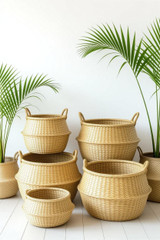gloves 3 Types of Gloves and What They Are Made Of
What are gloves made of? Okay, this seems like an easy question, right? After all, disposable gloves are basically sold by what they are made of: Latex, Nitrile, or Vinyl. But I want to address specific information about exactly what these Latex, Nitrile, Vinyl, and PVC materials are.
1. Latex Gloves
Latex is basically natural rubber. The minor differences between pure natural rubber and latex have to do with chemical compounds added to the liquid rubber sap as it is processed. These chemicals enhance the ability of natural rubber to maintain "solid surface tension" while being stretched so holes don't appear in the stretched glove. These chemicals also enhance the natural rubber's resistance to ultraviolet radiation. In addition, the latex is almost always given a tint with special dyes while it is still in liquid state.
These chemical additives are generally non-allergenic. The common allergy that some people develop to latex products is an allergy to the natural rubber proteins. Those who develop an allergy to latex most often switch to nitrile or vinyl gloves.
2. Nitrile Gloves
Nitrile is a co-polymer of butadiene and acrylo-nitrile. The nitrile that is used in gloves has a relatively high acrylo content, making it a material that is extremely resistant to petroleum-based oils and hydrocarbon fuels. Acrylonitrile is produced in volume by a process called ammoxidation that uses the oxidation of propylene in the presence of ammonia and a catalyst. The catalyst can vary the properties of the final product. Nitrile is generally much more resistant to puncture than latex is.
Nitrile compounds used to be referred to as "synthetic rubber", but this terminology is now avoided by those inside the industry because the term "synthetic" now is used to refer to Vinyl or PVC.
3. Vinyl and PVC Gloves
Vinyl and Polyvinyl Chloride are both made of the same substances. Polyvinyl Chloride is a petroleum-based product. There are many hundreds of different PVC formulations that are designated with "pf" prefixes. Chemical engineers spend enormous amounts of research time developing new PVC formulas in order to create materials with differing properties.
These various PVC properties have names that challenge the casual investigator: "Planar tensile strength" and "Compressive Redactability" are some of the properties that are measured for each formula. Resistance to various external chemicals is obviously an important consideration for gloves.
Written by Ralph Zuzolo of glovenation.com
Recent Posts
-
Order the Best Boss Day Gifts for Male & Female Bosses in the UAE from Craftihouse.com
Every year, Boss’s Day is the perfect opportunity to show appreciation for the people who lead, ment …13th Oct 2025 -
How This Gift Came to Life: The Story Behind Our Palm Leaf Baskets
How This Gift Came to Life: The Story Behind Our Palm Leaf Baskets In a world where everything is be …8th Oct 2025 -
Handmade Leather Key Chains – Timeless Souvenirs & Everyday Companions
Handmade Leather Key Chains – Timeless Souvenirs & Everyday Companions Introduction In a world where …25th Sep 2025



